Anthropologists who study intact indigenous peoples find that they generally do not have a word for play. Children in these communities just do what kids have always done, naturally and without much “parenting.” The French philosopher Rousseau largely formed our modern idea of play as a distinct behavior in the mid-1700s. He urged that children be given freedom to enjoy sunlight, exercise, and play and recognized that there are definite periods of development in a child’s life.
This notion of play became more universal as society was increasingly industrialized to the extent that places to play were scarce, which in turn led to the creation of playgrounds. These came about as a result of motorized vehicles commandeering the roads making it, in the eyes of the community, unsafe to play in the street. Play in the street was primarily ball and running games, hopscotch, jump rope, and the like. Following Rousseau’s romanticized notion of play, these new playgrounds added “exercise” equipment such as monkey bars and swings. By the end of the 19th century, slides and merry-go-rounds had been added completing what we now view as the traditional playground.

The point of this brief history lesson is to highlight that “play” as we now envision it is a direct product of society. What society gains from playgrounds is to create a place where play is sanctioned, where it’s supposed to happen, and by inference, this makes other places “not OK to play here.” When society creates playgrounds as the place where play is allowed children, society can now send kids off to school where they are expected to do their school “work” and then, if they are lucky, be sent outside to burn off energy, so they come back in, sit still, and work some more.
We are just now coming to understand that this separation between play and work, be it a job or studies, is not such a great idea. These days it seems that there is a study every week that demonstrates the push for academics before children turn eight years old has measurable negative consequences on a child’s later performance at school, in their jobs, and in their personal lives. And it’s not just children that need to play. The business magazines are rife with stories about creative people and enterprises that welcome playfulness at work. Playfulness is now understood to be the wellspring of creativity, and creativity means big bucks.
What we are seeing at an ever-accelerating pace is another paradigm shift in which society, or at least segments of it, are beginning to repudiate the notion that playfulness should be placed into a box.
The Community Connection
Societies are made up of communities, and it is in these subgroups where we find the unique expressions of how the community sees itself. A community often expresses its identity most clearly in the way they provide for play. For example, contrast the community of Ithaca, New York with its adventure playground, Hands-on-Nature Anarchy Zone and Mud Day with school districts across the nation that have eliminated recess. Or compare elaborate and inclusive play spaces such as Magical Bridge Playground in Palo Alto, California with cities that buy essentially identical play structures for all of their parks claiming that standardization improves and lowers the cost of maintenance.

Playgrounds are an exercise in placemaking. They are a physical manifestation of the community’s intentions and values. Where one community values fun, another may value conformity. Where a town may let their play spaces fall into disrepair because of budget cuts, another may organize volunteers to do what needs to be done.
Community identity is an interesting phenomenon. Some towns have a strong sense of self, they know who they are, and they foster and preserve their identity. What happens over time is that people who like what they see when they first visit a new community often end up moving in. In essence, strong towns grow largely with people who self-select to be there because they share the same values, and a positive reinforcement pattern is created.

Smart city governments recognize that their parks and recreation department is the front door to their community. Parks are among the first impressions, and first impressions tends be the most lasting. Schools generally make the second impact, and here again it is the playground that sets the early impression of how much children are valued.
The Nextdoor Neighbor
As our analysis gets increasingly fine-grained, we can look at the impact on play by small groups and the neighborhood. Those that look at the issues of public health and happiness tell us that American neighborhoods are often dominated by two emotional qualities, isolation and angst. The isolation comes from many factors including long workdays often by both parents, detached single-family housing, high mobility that leads to loss of extended family connections, etc.
The angst comes mainly from the conditions of our modern times with instant access to a fountain of fear-inducing information about personal security, economic and environmental uncertainties, and a general feeling of helplessness.
With isolation and angst as a common emotional backdrop, is it any wonder that parents can become over controlling of their children and circumscribe their play? Dr. Peter Gray has written extensively about this issue. In a recent article, “Risky Play: Why Children Love It and Need It” in Psychology Today April 2014, he cited this research finding:
"In a recent survey of over a thousand parents in the UK, 43% believed that children under the age of 14 shouldn’t be allowed outside unsupervised, and half of those believed they shouldn’t be allowed such freedom until at least 16 years of age!"
Such overprotectiveness is also rampant in the U.S., but when we look elsewhere, the story is different. For example, from The Atlantic City Lab [http://www.citylab.com/commute/2015/09/why-are-little-kids-in-japan-so-…] September 28, 2015:
"Parents in Japan regularly send their kids out into the world at a very young age. A popular television show called Hajimete no Otsukai, or My First Errand, features children as young as two or three being sent out to do a task for their family. As they tentatively make their way to the greengrocer or bakery, their progress is secretly filmed by a camera crew. The show has been running for more than 25 years."
There are two primary reasons for this radically different parenting style. First, Japan has a significantly lower crime rate. While the U.S. has a lot of work to do on public safety, we have been making rapid progress on lowering crime.
We now have a crime rate [http://www.brookings.edu/blogs/brookings-now/posts/2014/05/how-to-reduc…] that is about the same as it was in the late ’60s during which time kids were free to roam widely. In comparison, current trends in parenting are irrationally becoming increasing protective. If the highest crime rate communities are removed from the statistics, most American neighborhoods are nearly as safe as those in Japan.
But it is not just crime, but also the fear of cars, that makes parents protective. Unfortunately, it is difficult to tease out statistics on injuries to children from cars when they are at play rather than walking or biking. It is clear that the overall car-pedestrian related injuries are down, but that is most likely due to fewer children being outdoors at all.
The reason that Japanese parents are less concerned about autos is that their communities are designed more for people than for cars. Again from the City Lab article:
"Public space is scaled so much better—old, human-sized spaces that also control flow and speed,” Dixon notes. In Japanese cities, people are accustomed to walking everywhere, and public transportation trumps car culture; in Tokyo, half of all trips are made on rail or bus, and a quarter on foot. Drivers are used to sharing the road and yielding to pedestrians and cyclists."
Finally, Japanese children do not fear strangers, and they learn from an early age that they can ask anyone for help. In contrast, the drumbeat of “stranger danger” is so intense here that an unmarked delivery van may be reported, stopped, and questioned just for going about their normal business.
Modern city planning is beginning to take into consideration these issues. For example, cities such as Portland, Oregon, Boston, Massachusetts, and many others have excellent urban planning and programs that make riding a bike or walking very safe. Unfortunately, most of the increased safety results are achieved by simply creating separate paths of travel away from cars. Putting bikes into their own lane does little to enhance the playability of neighborhoods where the play is often in front yards, driveways, and the street.
Mike Lanza in his book Playborhood has taken this issue head on. In his writings and in his front yard, he campaigns for a very local approach to play that reaches out to neighbors to help them understand that the neighborhood is the children’s home too, and they have an equal right to the common spaces, streets, and sidewalk.

All in the Family
While the society and community are the broad context in which play is framed, at the end of the day, it is the family that is the primary determinant of the quality and quantity of children’s play.
One would expect that families would copy their child-rearing style on the way their parents did things. These days this is clearly not the case as most adults bemoan that the things they enjoyed as children are no longer part of today’s childhood. So, if they don’t copy their parents, where do families get their ideas and role models? Sociologists have begun to study “parenting peer pressure” and find that there is enormous influence by society on parents [http://blog.kinstantly.com/mommy-correctness-on-the-playground/] to follow what is deemed as “acceptable” behavior. If you don’t copy your peers, you risk social ostracism.
This can be seen in such cases as the recent news report where parents have been reported to Child Protective Services for allowing their 8-year-old children to play alone in the park and nearly lost custody of the children. The notion that a child must be supervised at all times is pervasive. Astonishingly, grandparents, who themselves let their children roam freely, now often join in this campaign to overprotect children. Thus, even if parents want to be more trusting of their children and the safety of their neighborhoods, they find little support from their friends, extended family, or neighbors.
Media Madness
We cannot ignore the impact on play of popular culture and the role of media. On one hand, every minute spent with a screen is a minute lost of play. Recent studies put children’s screen time at 5 to 6 hours per day. Some of this time is spent on smart devices at school, so the actual amount of time taken away from play is somewhat less, but still social media and entertainment are a huge reason kids are playing less. And note, as the educator, psychologist, and writer, Dr. Thomas Armstrong has noted,
"Play is NOT digital. Digital is all about 1’s and 0’s programed by adults. Play, on the other hand, is imagined by children in all the nuanced and subtle places where 1’s and 0’s do not reach."

As noted previously, pervasive media also tends to grossly overstate the dangers to children and at the same time provides no counter positive message. We don’t hear that crime rates have declined nor are we shown good examples of communities taking their neighborhoods back from cars and the positive changes that result.
How to Make Change
The warnings about the negative impact of the decline in play are everywhere. Screen time is linked with near-sightedness. Loss of getting dirty is linked with asthma. Play deficit is linked to reduced executive function leading to bullying and poor socialization, decision-making, and academic performance. The loss of physical activity results in obesity as well as elevated cardiac and diabetes risk. And on and on.

Over the past decade there have been many well-intentioned efforts to address this problem without any indication that the trends are diminishing, let alone being reversed. Clearly, a different direction is needed.

We are surrounded by all manner of existential threats, take your pick: climate change, terrorism, economic inequity, China, and more. To most people they all are much more important than the loss of play. Yet we have to think this through. Who will have to face these problems? Who will come up with the solutions? Preparing our children for what comes next must become our highest priority. Yes, we need to do the best we can to mitigate the impact of the threats we can see today, but in the final analysis, it is our children who will bear the greatest burden.
Here are a few things we can do.
Value Play. We know that letting kids play almost to the exclusion of everything else, especially in the early years, is critical to their healthy development. The continued push for academics at younger and younger ages must stop and be reversed. And play needs to become part of everyone’s life and not restricted to certain times and places.
Calm Our Neighborhoods. We need a massive effort to renovate our neighborhoods so that the danger from cars is reduced. These days the public’s will is lacking for this until we begin to do so on a broad scale; then people will begin to see what a wonderful change occurs with this simple step. Cities such as Oslo, Dublin, Paris, Madrid, and Brussels are already implementing car-free areas. The movement to close neighborhood streets for play is gaining some traction.
Shame the Media. It is unconscionable that the drumbeat of fear is allowed to go on unquestioned and unchallenged. We have to call out the media and demand that they tone it down and begin to be more balanced. Millennials are increasingly getting hip to the mass media and are increasingly turning to social networks to get the truth. This “underground” information source is where the message about the importance of play is thriving.
Playful Communities. Anything that comes on a screen is less exciting, less engaging, and less healthy than real life. Some communities have a festival nearly once a week. We can too. How about a lot more flash mobs? Instead of the typical once a week, wouldn’t full-time farmer’s markets be more fun?
Crazy as it sounds the science is now overwhelming supportive that putting play as the number one priority for ourselves and for the country is the best answer for most of the ills that we face. Fear makes us huddle in the dark. The feeling that we can’t change anything makes us truly helpless. Play on the other hand connects us, builds confidence, clears the mind, and opens the heart. These are the tools we need for the future.
Play like your life depends on it!



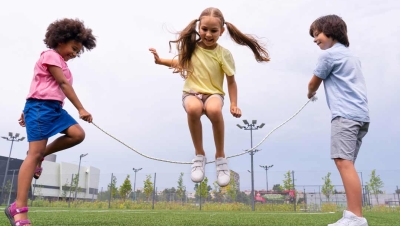
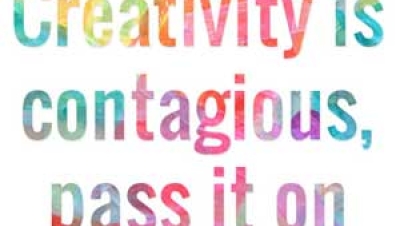
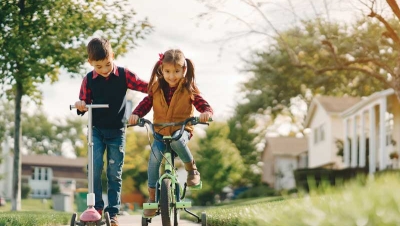

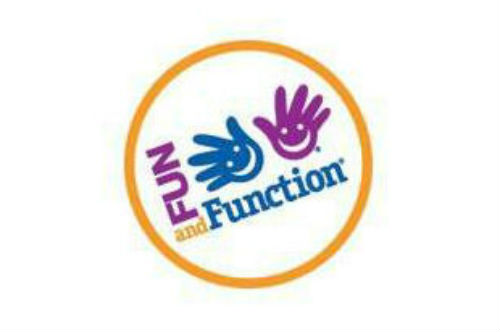


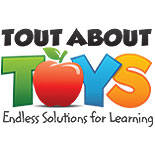






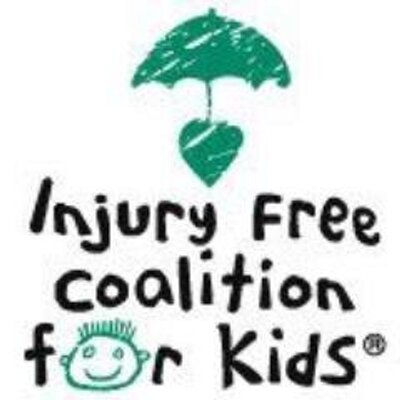


Add new comment